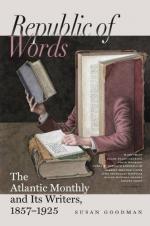But securely established as Robin Hood is in popular esteem, his historical position is by no means well ascertained, and his actual existence has been a subject of shrewd doubt and discussion. “A tale of Robin Hood” is an old proverb for the idlest of stories; yet all the materials at our command for making up an opinion on these questions are precisely of this description. They consist, that is to say, of a few ballads of unknown antiquity. These ballads, or others like them, are clearly the authority upon which the statements of the earlier chroniclers who take notice of Robin Hood are founded. They are also, to all appearance, the original source of the numerous and wide-spread traditions concerning him; which, unless the contrary can be shown, must be regarded, according to the almost universal rule in such cases, as having been suggested by the very legends to which, in the vulgar belief, they afford an irresistible confirmation.
Various periods, ranging from the time of Richard the First to near the end of the reign of Edward the Second, have been selected by different writers as the age of Robin Hood; but (excepting always the most ancient ballads, which may possibly be placed within these limits) no mention whatever is made of him in literature before the latter half of the reign of Edward the Third. “Rhymes of Robin Hood” are then spoken of by the author of “Piers Ploughman” (assigned to about 1362) as better known to idle fellows than pious songs, and from the manner of the allusion it is a just inference that such rhymes were at that time no novelties. The next notice is in Wyntown’s Scottish Chronicle, written about 1420, where the following lines occur—without any connection, and in the form of an entry—under the year 1283:—
“Lytil Jhon and Robyne Hude
Wayth-men ware commendyd gude:
In Yngil-wode and Barnysdale
Thai oysyd all this tyme thare
trawale."[1]
At last we encounter Robin Hood in what may be called history; first of all in a passage of the “Scotichronicon,” often quoted, and highly curious as containing the earliest theory upon this subject. The “Scotichronicon” was written partly by Fordun, canon of Aberdeen, between 1377 and 1384, and partly by his pupil Bower, abbot of St. Columba, about 1450. Fordun has the character of a man of judgment and research, and any statement or opinion delivered by him would be entitled to respect. Of Bower not so much can be said. He largely interpolated the work of his master, and sometimes with the absurdest fictions.[2] Among his interpolations, and forming, it is important to observe, no part of the original text, is a passage translated as follows. It is inserted immediately after Fordun’s account of the defeat of Simon de Montfort, and the punishments inflicted on his adherents.
“At this time, [sc. 1266,] from the number of those who had been deprived of their estates arose the celebrated bandit Robert Hood, (with Little John and their accomplices,) whose achievements the foolish vulgar delight to celebrate in comedies and tragedies, while the ballads upon his adventures sung by the jesters and minstrels are preferred to all others.




